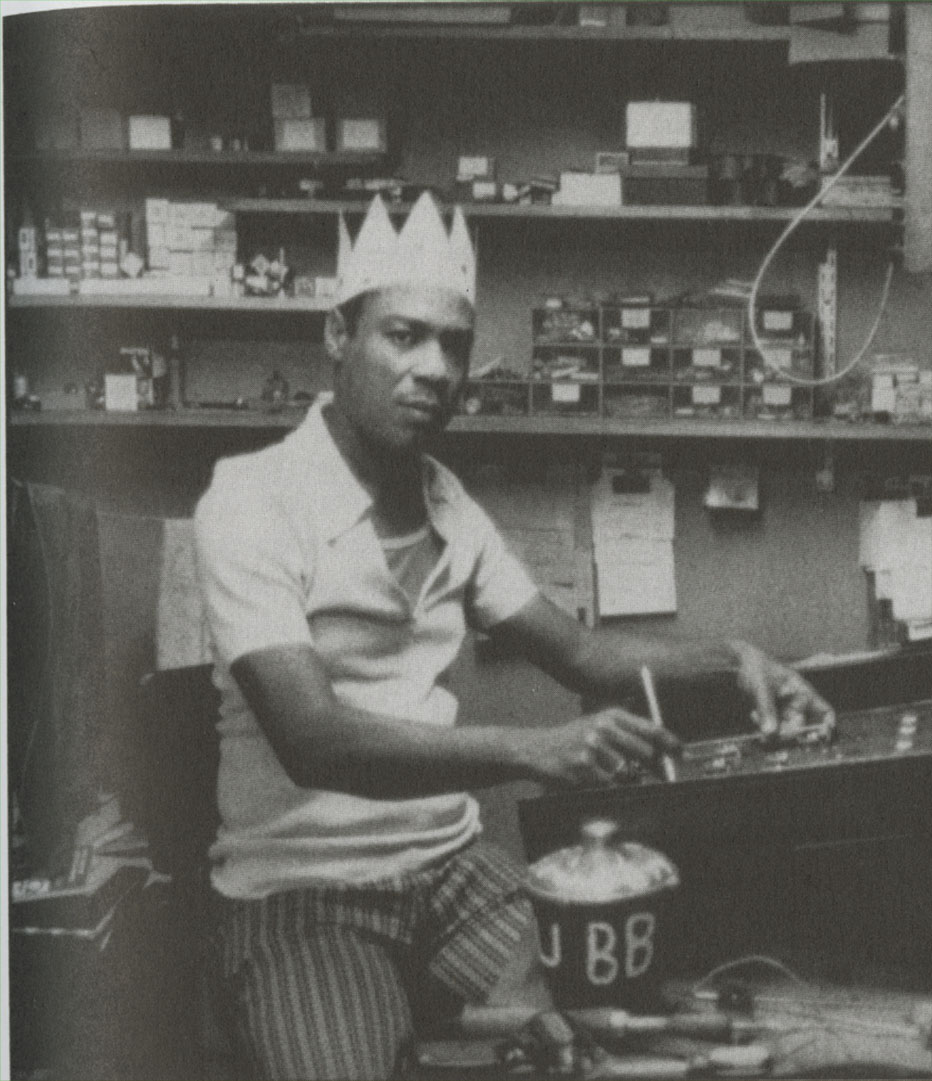National Library of Jamaica
KING TUBBY (1941 -
1989)
 Osbourne
Ruddock, aka King Tubby was born on the 28th of January 1941. He grew
up around High Holborn Street in Central Kingston before moving to Waterhouse in
1955. After working repairing radios, he began to experiment with sound system
amplifiers and by 1968 he was operating his own – Tubby’s Home Town Hi-Fi. He
worked as a disc cutter for Duke Reid and it was there that he discovered that
he could make special versions of well-known rocksteady tunes:
Osbourne
Ruddock, aka King Tubby was born on the 28th of January 1941. He grew
up around High Holborn Street in Central Kingston before moving to Waterhouse in
1955. After working repairing radios, he began to experiment with sound system
amplifiers and by 1968 he was operating his own – Tubby’s Home Town Hi-Fi. He
worked as a disc cutter for Duke Reid and it was there that he discovered that
he could make special versions of well-known rocksteady tunes:
“By cutting out
most of the vocal track, fading it in at suitable points, reducing the mix down
to the bass only and dropping other instrumental tracks in or out, Tubby had
invented dub.” (The Guinness Who’s Who of Reggae)
As producers began
to see the vast potential of dub, King Tubby found himself working with the best
producers of the day. By 1971, he was working with the likes of Bunny Lee, Lee
‘Scratch’ Perry, Glen Brown, Augustus Pablo and ‘Prince’ Tony Robinson. He also
worked with singers such as Johnny Clarke, Cornell Campbell, Linval Thompson,
Jackie Edwards, Derrick Morgan, Delroy Wilson and John Holt. Tubby’s name as a
mixer soon appeared on well over 100 albums. Always the experimenter, the
innovator, by 1988 King Tubby had begun to issue computer-generated digital
music featuring singers and DJs such as Courtney Melody, Pliers and Ninjaman.
Just as he was about to open his own studio, tragedy struck. On February 6,
1989, a lone gunman murdered King Tubby outside his home.
Many innovations,
not only in Jamaican music but in other dance forms as well; the ‘dub mix’, the
practice of deejaying extended lyrics over rhythm tracks, the prominence of bass
and drums in the mix – all were developed by King Tubby during period 1969 –
1974.
Next...Peter Tosh
Introduction
 Osbourne
Ruddock, aka King Tubby was born on the 28th of January 1941. He grew
up around High Holborn Street in Central Kingston before moving to Waterhouse in
1955. After working repairing radios, he began to experiment with sound system
amplifiers and by 1968 he was operating his own – Tubby’s Home Town Hi-Fi. He
worked as a disc cutter for Duke Reid and it was there that he discovered that
he could make special versions of well-known rocksteady tunes:
Osbourne
Ruddock, aka King Tubby was born on the 28th of January 1941. He grew
up around High Holborn Street in Central Kingston before moving to Waterhouse in
1955. After working repairing radios, he began to experiment with sound system
amplifiers and by 1968 he was operating his own – Tubby’s Home Town Hi-Fi. He
worked as a disc cutter for Duke Reid and it was there that he discovered that
he could make special versions of well-known rocksteady tunes: